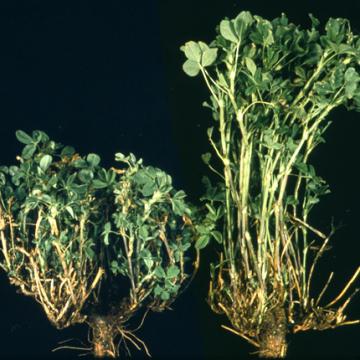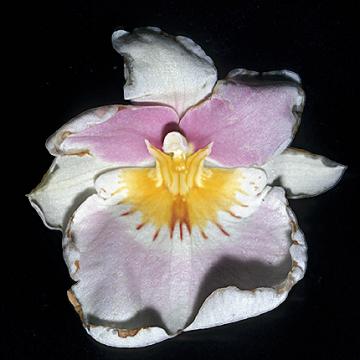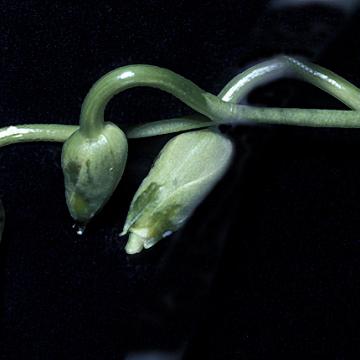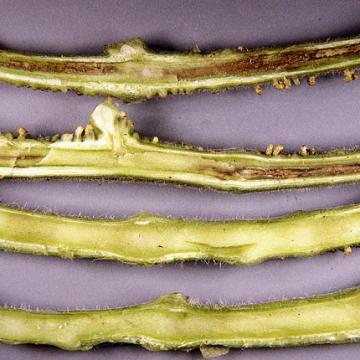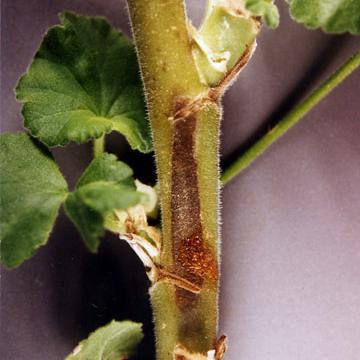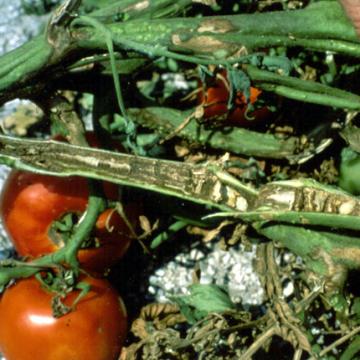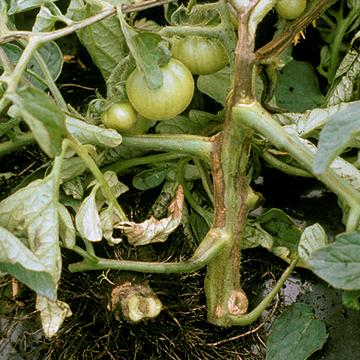DISEASE: Alfalfa dwarf
HOST: Alfalfa
Alfalfa dwarf is characterized by stunted plants (left), usually dark blue-green in color. Xylem tissues become brown, especially when exposed to air.
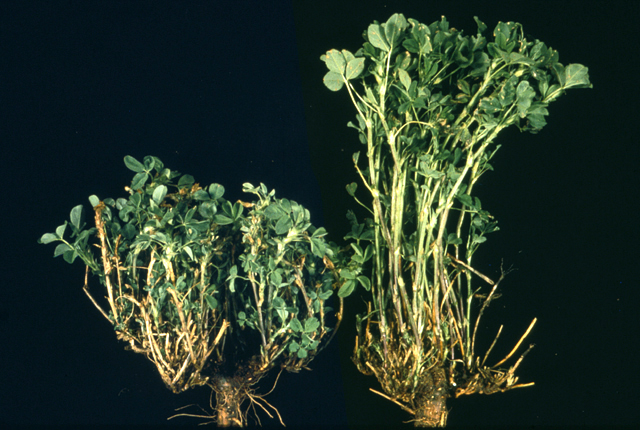
Alfalfa dwarf | Alfalfa
DISEASE: Alfalfa dwarf
HOST: Alfalfa (Medicago sativa)
PATHOGEN: Xylella fastidiosa
SOURCE: R. M. Davis
DISEASE: Bacterial bud and petal blight
HOST: Orchid
Miltonia orchid with brownish necrotic areas around edges of flower petals.
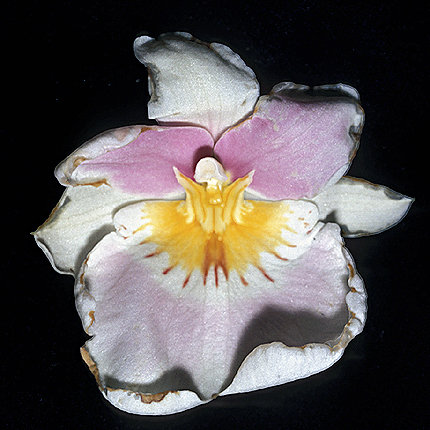
Bacterial bud and petal blight | Orchid
DISEASE: Bacterial bud and petal blight
HOST: Orchid (Miltonia sp.)
PATHOGEN: Acidovorax cattleyae
SOURCE: R. Raabe
DISEASE: Bacterial bud and petal blight
HOST: Orchid
Miltonia orchid with diseased water-soaked flower buds.
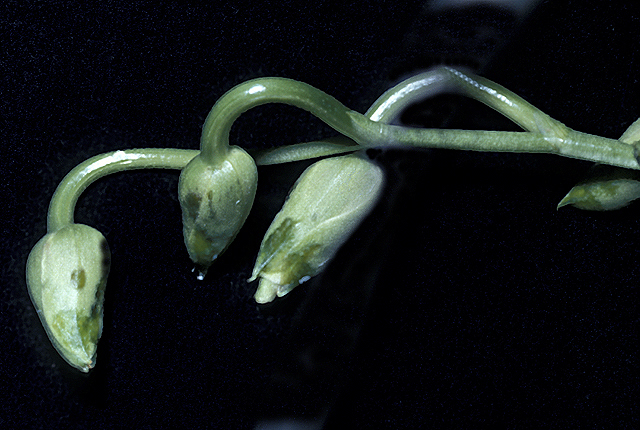
Bacterial bud and petal blight | Orchid
DISEASE: Bacterial bud and petal blight
HOST: Orchid (Miltonia sp.)
PATHOGEN: Acidovorax cattleyae
SOURCE: R. Raabe
DISEASE: Pith necrosis
HOST: Geranium
Geranium with wilted, yellow necrotic leaves.
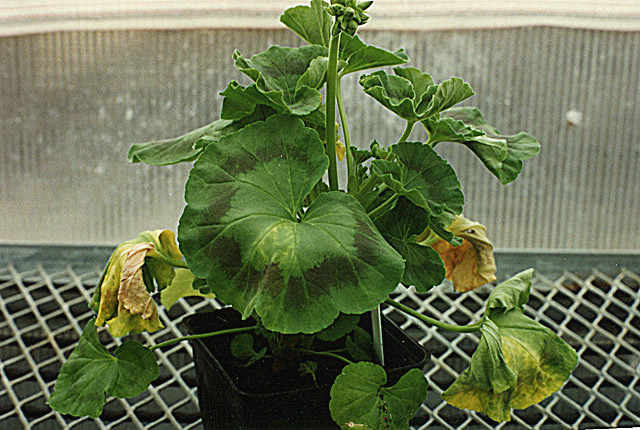
Pith necrosis | Geranium
DISEASE: Pith necrosis
HOST: Geranium (Pelargonium sp.)
PATHOGEN: Pseudomonas corrugata
SOURCE: A. Magyarosy, D. Thomas
DISEASE: Pith necrosis
HOST: Geranium
Pitted and hollow stems, one of the disease symptoms.

Pith necrosis | Geranium
DISEASE: Pith necrosis
HOST: Geranium (Pelargonium sp.)
PATHOGEN: Pseudomonas corrugata
SOURCE: A. Magyarosy, D. Thomas
DISEASE: Pith necrosis
HOST: Geranium
Discolored stem caused by systemic infection of the pathogen.
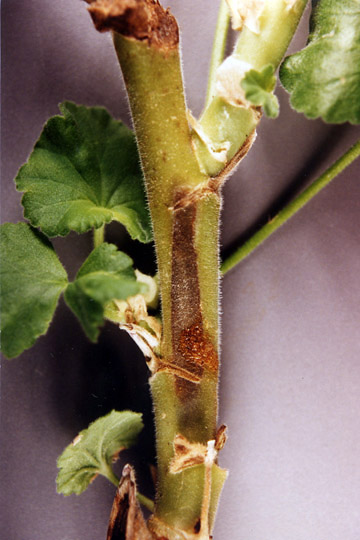
Pith necrosis | Geranium
DISEASE: Pith necrosis
HOST: Geranium (Pelargonium sp.)
PATHOGEN: Pseudomonas corrugata
SOURCE: A. Magyarosy, D. Thomas
DISEASE: Pith necrosis
HOST: Tomato
Cracked, dry, hollow stems with internal necrosis.
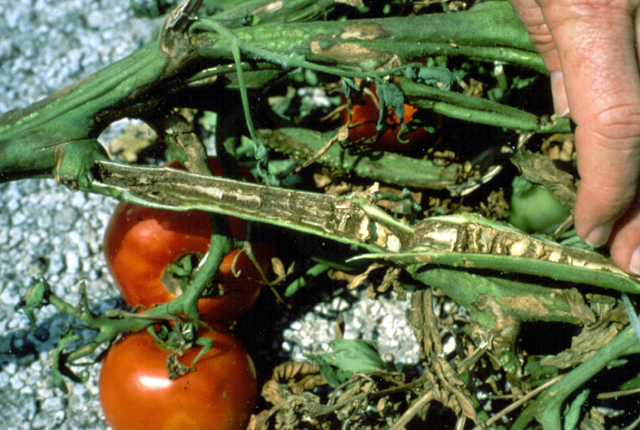
Pith necrosis | Tomato
DISEASE: Pith necrosis
HOST: Tomato (Lycopersicon esculentum)
PATHOGEN: Pseudomonas corrugata
SOURCE: A. Alvarez
DISEASE: Pith necrosis
HOST: Tomato
External necrotic stem tissues. Initial symptoms include chlorosis of young leaves. Wilting may occur when disease is severe.
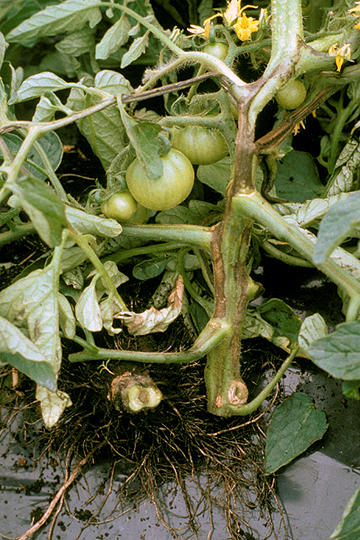
Pith necrosis | Tomato
DISEASE: Pith necrosis
HOST: Tomato (Lycopersicon esculentum)
PATHOGEN: Pseudomonas corrugata
SOURCE: K. Natsuaki, M. Goto


